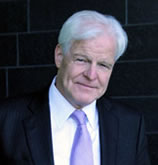Introduction
Cochlear implants, via direct electrical stimulation of the auditory nerve, allow the restoration of hearing and speech recognition in both adults and children having sensorineural deafness. These devices typically contain both extemal components (speech processor, microphone, transmitter) and intemal components (including the cochlear stimulator and electrode array), which are surgically placed under the skin behind the ear and in the cochlea. According to the National Institute on Deafness and other Communications Disorders, by June 20 I 0, over 188,000 individuals worldwide had received cochlear implants, including approximately 41,500 adults and 25,500 children in the US. I Given the important role of radiotherapy (RT) in the multidisciplinary management of various malignancies, the tolerance of cochlear implants to therapeutic doses of radiation is an important consideration. In this work, we present a case of a pediatric patient with leukemia found to have sensorineural deafness, who then received a cochlear implant and subsequently received RT to the whole brain. Literature regarding RT in the setting of a cochlear implant and the importance of early childhood implantation for language speech development is reviewed.
Case description
This review was prompted by the case of a 4-year-old girl with relapsed acute lymphoblastic leukemia (ALL) seen by the authors in Colorado. She was initially diagnosed at age 2, and received systemic therapy as specified by the Children's Cancer Group 1991 protocol "Phase I" randomized study of escalating dose intravenous methotrexate (MTX) without leucovorin rescue vs oral MTX and single vs double delayed intensification in children with ALL," leading to early disease remission. During maintenance therapy, at age 4, a routine lumbar puncture revealed an isolated central nervous system relapse, and she initiated systemic treatment as specified by the Children's Oncology Group AALL02P2 protocol "Treatment of late isolated extramedullary relapse from ALL." That treatment regimen is composed primarily of chemotherapy, but also includes planned cranial radiation therapy at the end oflntensification II to reduce the risk of future central nervous system relapse.
During treatment, she was found to have hearing loss and speech delay. Audiologic testing was perfonned, confinning the presence of bilateral sensorineura l hearing loss. She initially tried bilateral hearing aids, but did not develop speech. The recommended management of her hearing loss was placement of cochlear implants. However, as radiation therapy to the brain would be required in the future, we discussed the potential risks of radiation to the cochlear implant. The manufacturer recommends against placing the imp lant directly within a radiation field. However, after review of the literature, we deemed that the dose of radiation required would be unlikely to adversely affect the cochlear implant and that early implantation would improve development of speech. Given the possibility of malfunction, we chose ta implant a single cochlear device first. She underwent placement of a Cochlear (Sydney, Australia) Nucleus CI512 on the right side, with the surgety perfonned during a period of sufficient hematologic recovery. One year after placement of the cochlear implant, she received whole brain RT to a total dose of 12 Gy in 8 fractions using 6 MY X-rays. Opposed lateral beams were utilized, with the resulting dose distribution approved to the 100% isodose line. As the dose planned for whole brain RT was felt to be unlikely to cause implant dysfunction , and was also well below the consensus dose constraint for the cochlea, no special techniques were utilized to minimize dose to either of these structures. No hotspots within the cochlea-cochlear implant were allowed. The digita lly reconstructed radiograph is shown in Figure I, with the cochlear implant noted with an arrow. She tolerated radiation therapy well. One month after RT, the cochlear implant was queried and observed to be operating with no errors. She continues with her chemotherapy and is tolerating treatment well.
Discussion
. . .Continue to read rest of article (PDF).
Michael Gossman, MS, DABR, RSO, is a Board Certified Qualified Expert Medical Physicist - Currently the Chief Medical Physicist & RSO of Radiation Oncology in Ashland, KY - a Medical Consultant to the U.S. Nuclear Regulatory Commission (U.S. NRC) - and an Accreditation Site Reviewer for the American College of Radiation Oncology (ACRO). He is the highest ranking scientist in the medical community. His expertise involves the safe, effective and precise delivery of radiation to achieve the therapeutic result prescribed in patient care by radiation oncologists.
©Copyright - All Rights Reserved
DO NOT REPRODUCE WITHOUT WRITTEN PERMISSION BY AUTHOR.











